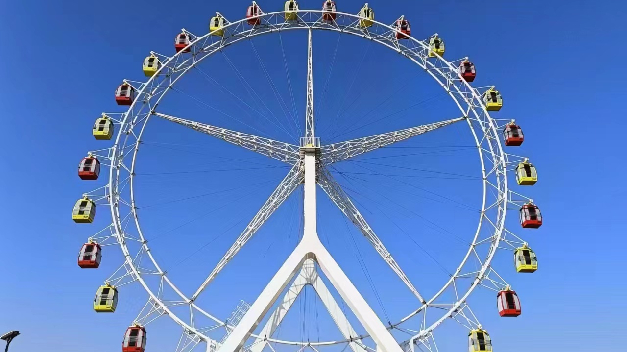- Albanian
- Arabic
- Belarusian
- Bengali
- Czech
- English
- French
- German
- Hebrew
- Hungarian
- Indonesian
- irish
- Italian
- Japanese
- kazakh
- Persian
- Russian
- Thai
- Uzbek
- Vietnamese
rollercoaster design
The Art and Science of Roller Coaster Design
Roller coasters have been thrilling riders for over a century, capturing the hearts and adrenaline of millions around the globe. The design of these exhilarating rides is a sophisticated blend of art and science, combining creativity, engineering, and psychology to create an experience that is both safe and exciting. Let’s delve into the intricate world of roller coaster design and explore the elements that make them so captivating.
The Basics of Roller Coaster Engineering
At the core of roller coaster design lies a deep understanding of physics and engineering principles. Designers and engineers utilize concepts such as gravity, speed, inertia, and centripetal force to ensure that the ride is not only thrilling but also safe for riders. The basic components of a roller coaster include tracks, trains, and supporting structures. The tracks are designed to guide the trains through a series of twists, turns, and drops, while the trains are engineered to provide a comfortable ride.
Modern roller coasters are typically made of steel or wood. Steel coasters are known for their smooth rides and ability to achieve greater heights and speeds. They allow for intricate designs with steep drops and inversions. On the other hand, wooden coasters offer a classic feel with their nostalgic charm and often deliver a more rugged experience due to the vibrations of the wood.
The Role of Computer-Aided Design
In recent years, computer-aided design (CAD) software has revolutionized the roller coaster design process. This technology allows designers to create intricate models and simulate the dynamics of the ride before it is constructed. Engineers can analyze factors like stress distribution, load capabilities, and rider comfort, ensuring that each design meets safety standards. These simulations help designers visualize how the ride will perform, making adjustments before any physical construction begins.
Safety First
rollercoaster design

Safety is paramount in roller coaster design. Engineers must adhere to strict industry regulations and safety standards to ensure that the ride can withstand the forces exerted on it. Key safety features include reliable restraint systems, emergency stop mechanisms, and redundancy in critical components. Designers also account for the psychological aspect of safety—riders must feel secure while experiencing the thrill of speed and height.
One of the essential elements of a safe and enjoyable ride experience is the appropriate selection of track height and drop angles. Designers carefully consider how changes in elevation will create the desired thrills without overwhelming the riders. For instance, the 'vertical drop' elements are designed to create a feeling of weightlessness, yet they are constructed in a way that limits excessive g-forces, preventing discomfort or injury.
Maximizing Thrill Factor
Creating an unforgettable ride experience also involves understanding the psychology of thrill-seeking behavior. Roller coasters are designed to manipulate emotions, combining anticipation, fear, and euphoria. Elements such as sudden drops, sharp turns, inversions, and airtime hills are strategically placed to maximize excitement. Designers often incorporate thematic elements—such as storylines, music, and visual effects—that envelop riders in an immersive experience, making the ride not just about speed but also about storytelling.
The Future of Roller Coaster Design
As technology advances, the future of roller coaster design looks promising. Innovations such as virtual reality (VR) are beginning to enhance the ride experience, allowing riders to enter fantastical worlds while experiencing the physical thrills of the coaster. Furthermore, sustainable design practices are gaining traction, with some parks exploring ways to incorporate eco-friendly materials and energy-efficient systems in their attractions.
In conclusion, roller coaster design is a fascinating convergence of engineering, creativity, and psychology. Designers work tirelessly to craft attractions that provide a perfect blend of safety and thrill, using cutting-edge technology and a deep understanding of human emotions. With each new ride, they push the boundaries of what is possible, ensuring that roller coasters remain one of the most exciting forms of entertainment known to humankind. Whether it's the rush of adrenaline or the sense of wonder, the magic of roller coasters will continue to delight and inspire future generations.
-
Flume Ride-Hebei Zhipao Amusement Equipment Manufacturing Co., Ltd.|Thrilling Water Attraction&Customizable DesignJul.30,2025
-
Flume Ride - Hebei Zhipao Amusement Equipment | Water Coaster, Thrilling DescentJul.30,2025
-
Flume Ride - Hebei Zhipao | Thrilling Water AttractionJul.30,2025
-
Flume Ride: Thrilling Water Attraction by Hebei Zhipao|Log Flume Manufacturers&Flume Ride DesignJul.30,2025
-
Flume Ride-Hebei Zhipao Amusement Equipment Manufacturing Co., Ltd.|Thrilling Water Coaster, Safe DesignJul.30,2025
-
Flume Ride-Hebei Zhipao Amusement Equipment Manufacturing Co., Ltd.|Thrilling Water Attraction, Safe DesignJul.30,2025
